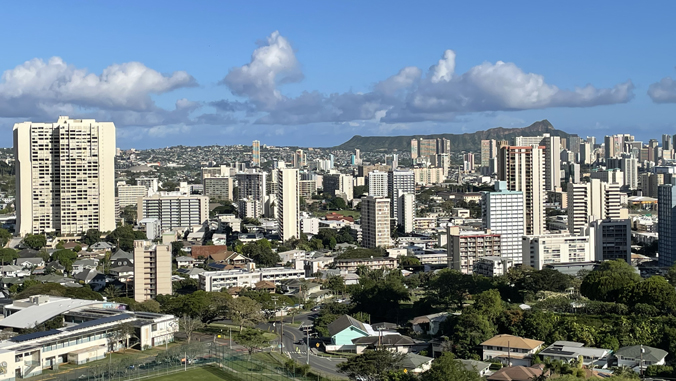

Living in Hawaiʻi is expensive, and lower-income households struggle the most to make ends meet. Yet despite the high cost of living, Hawaiʻi consistently ranks among U.S. states with relatively lower levels of income inequality. That’s according to a new analysis of the Gini coefficient (standard measure of income inequality that shows how much incomes differ from perfect equality) by University of Hawaiʻi Economic Research Organization (UHERO) Research Economist Rachel Inafuku.
In 2023, Hawaiʻi’s Gini coefficient stood at 0.42, ranking it among the least unequal states in the nation, alongside Arizona, Michigan and Pennsylvania.
“This pattern is not new; Hawaiʻi has exhibited lower income inequality than the national average for over a decade, a trend largely attributed to its unique economic structure and the draw of its climate and lifestyle amenities,” Inafuku wrote.
Hawaiʻi’s economy is heavily dependent on tourism, a sector that predominantly offers low- to mid-wage employment. In Hawaiʻi’s relatively high-cost environment, employers often pay more than their U.S. continent counterparts for these types of jobs. Higher rates of unionization also contribute to wage compression and reduce income inequality.
At the same time, Hawaiʻi has fewer high-paying, specialized occupations compared to many other states. This is partly because industries that typically offer higher wages—such as finance, tech and advanced business services—are either small or largely absent in the islands. Many of these sectors rely on frequent face-to-face interactions with clients and collaborators, which are easier to sustain in large connected metropolitan areas. As a result, these industries tend to cluster in major U.S. cities and remain limited in Hawaiʻi, where they primarily serve a local market.
In addition, workers in high-paying fields may accept lower salaries in exchange for the benefits of living in Hawaiʻi—such as our climate, amenities and family ties. As a result, top-paying positions in Hawaiʻi often offer lower compensation than similar roles on the continent. As noted in a previous UHERO blog, the average bachelor’s degree holder in Hawaiʻi earns less than their U.S. continent peers across most top-earning college majors.
“Taken together, Hawaiʻi’s wage structure—characterized by relatively higher pay for low-to-middle-income workers and lower compensation for high-income workers—compresses the income distribution,” Inafuku said.
Read the entire blog on UHERO’s website.
UHERO is housed in UH Mānoa’s College of Social Sciences.

